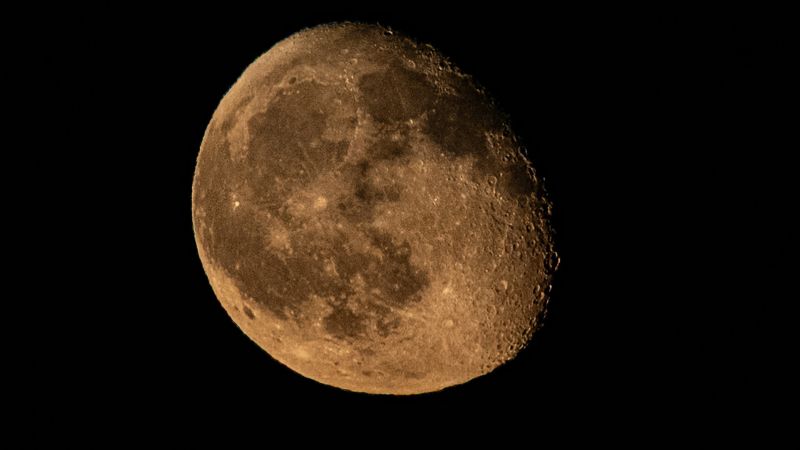
A black moon will occur this weekend. Here’s what to expect
How did your country report this? Share your view in the comments.
Diverging Reports Breakdown
A black moon will occur this weekend. Here’s what to expect
The black moon will occur Friday night into the early hours of Saturday. The moon will be closest to the sun at 2:06 a.m. ET Saturday, according to EarthSky. A new moon occurs when only its far side is illuminated by the sun, making it invisible from Earth. A total lunar eclipse will be visible in Europe, Asia, Australia, Africa, parts of eastern South America, Alaska and Antarctica on September 7 and 8, Time and Date says. The term black moon can also refer to a month in which there are no new moons, says NASA’s Planetary, Geology, Geophysics and Geochemistry Laboratory at Goddard Space Flight Center in Greenbelt, Maryland. But stargazers will have plenty to see this weekend, with four more full moons this year, including a full sturgeon moon and a blood moon in September and a full Beaver moon in November. The Farmers’ Almanac lists the list of full moons remaining in 2025.
The moon goes by many names. August saw the full sturgeon moon while in March sky-gazers may have witnessed the blood moon, which occurs when the satellite appears to turn red during a lunar eclipse. You may have also heard of a blue moon, the second full moon to happen in one month.
And then there is the black moon, occurring this weekend, which is rare — and invisible.
This phenomenon will occur Friday night into the early hours of Saturday. The moon will be closest to the sun at 2:06 a.m. ET Saturday, according to EarthSky.
What is a black moon?
Like a blue moon, a black moon isn’t an official term, but it refers to the second new moon in a month. It happens once every 29 months.
A new moon occurs when only its far side is illuminated by the sun, making it invisible from Earth. It marks the beginning of the lunar cycle.
“A black moon (or new moon) is when the moon is basically in between the Earth and the sun, not to make an eclipse, but where we don’t see the moon,” said Noah Petro, chief of NASA’s Planetary, Geology, Geophysics and Geochemistry Laboratory at Goddard Space Flight Center in Greenbelt, Maryland.
What makes it different from a solar eclipse is the placement of the moon. In a solar eclipse, the moon passes in front of the sun, blocking some or all the sunlight and casting a shadow on Earth. But a new moon (and black moon) passes near the sun.
The term black moon can also refer to a month in which there are no new moons. This typically happens in February because the lunar cycle follows a pattern of 29.5 days, according to Petro. February usually has 28 days, except on leap years when it has 29 days.
Stargazers may have quite a view
Since the black moon will be invisible, moon watchers won’t have much to see.
But stargazers will have plenty.
“A new moon or the black moon is great for astronomers when it’s clear,” Petro said, “because you can go outside and have basically no light contamination from the moon.”
This is the best time of year to see planets, according to EarthSky, so after sunset or just before sunrise, you might be able to spot some celestial bodies, such as Venus, Mars and Saturn.
If you have binoculars or a telescope, you can also keep an eye out for the dumbbell nebula, the colorful, glowing remnants of an old star 1,200 light-years from Earth in the Vulpecula constellation. The nebula appears during the first half of the night.
Upcoming full moons
Look out for four more full moons this year, with supermoons — full moons that appear while the moon is at its closest to Earth — occurring in October, November and December.
Here’s the list of full moons remaining in 2025, according to the Farmers’ Almanac:
September 7: Corn moon
October 6: Harvest moon
November 5: Beaver moon
December 4: Cold moon
Lunar and solar eclipses in 2025
Two eclipse events will take place as summer draws to a close.
A total lunar eclipse will be visible in Europe, Asia, Australia, Africa, parts of eastern South America, Alaska and Antarctica on September 7 and 8, according to Time and Date.
A lunar eclipse occurs when the moon passes directly into Earth’s shadow as the sun, Earth and the moon line up. This causes the moon to appear darker or dimmed.
When the moon sits in the darkest part of Earth’s shadow, the sun’s rays peek out from behind the Earth and the light refracts, giving the moon a reddish hue, according to London’s Natural History Museum. Some people call the result a blood moon.
Two weeks after the total lunar eclipse, a partial solar eclipse will be visible in parts of Australia, the Atlantic, the Pacific and Antarctica on September 21.
Solar eclipses occur when the moon moves between the sun and Earth. In the case of a partial solar eclipse, the moon will not fully block out the sun, according to NASA. It creates a crescent — as if the moon took a bite out of the sun.
Sign up for CNN’s Wonder Theory science newsletter. Explore the universe with news on fascinating discoveries, scientific advancements and more.
Source: https://www.cnn.com/2025/08/22/science/black-moon-august-new-moon
